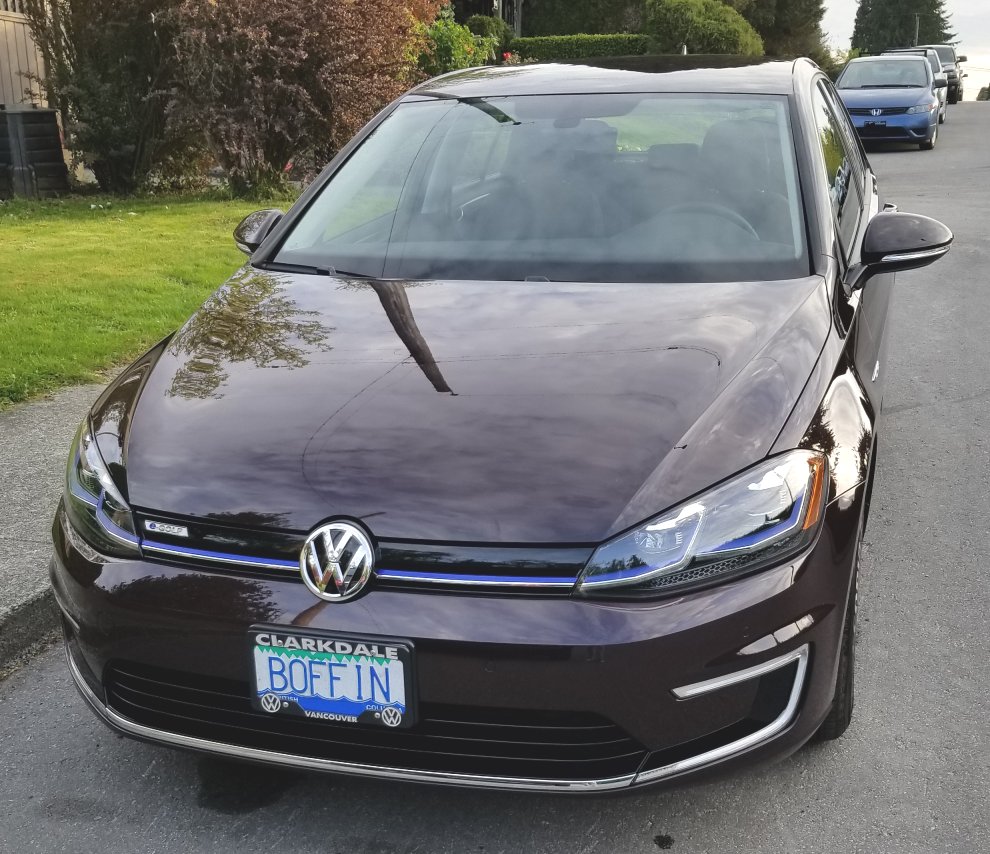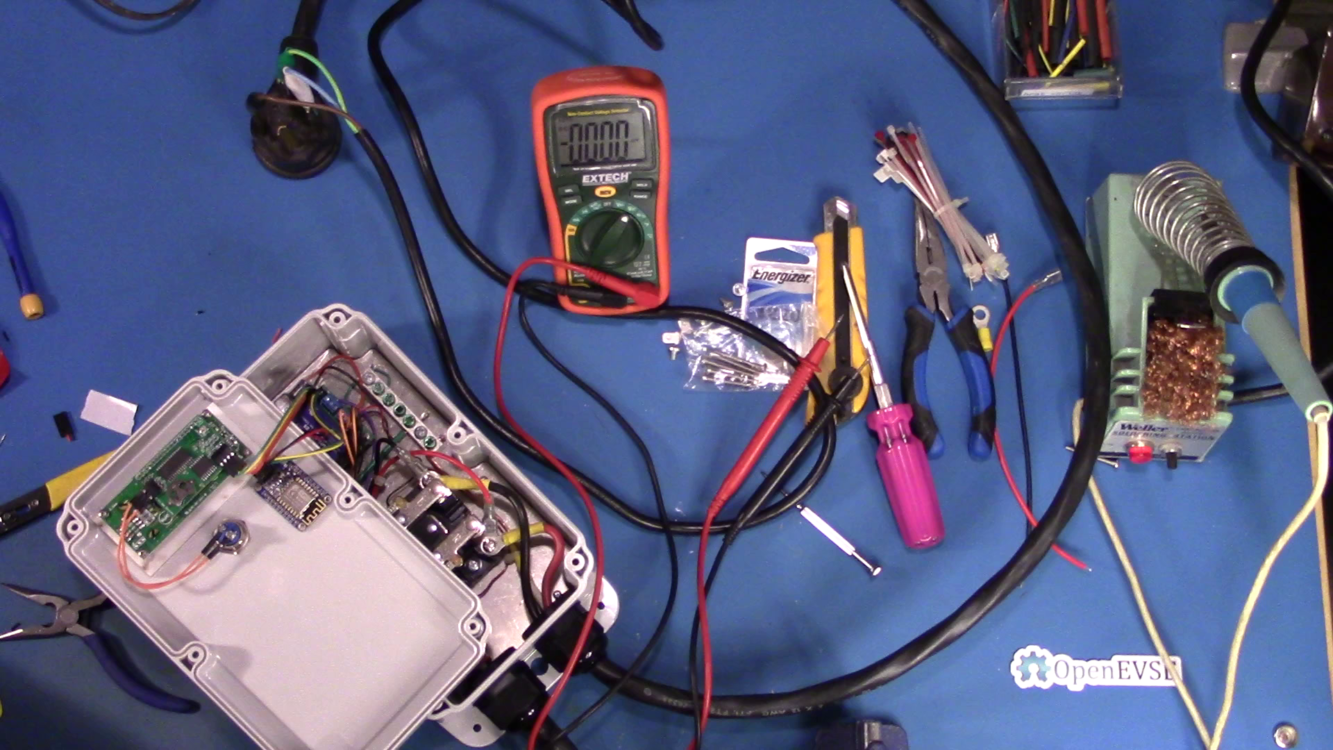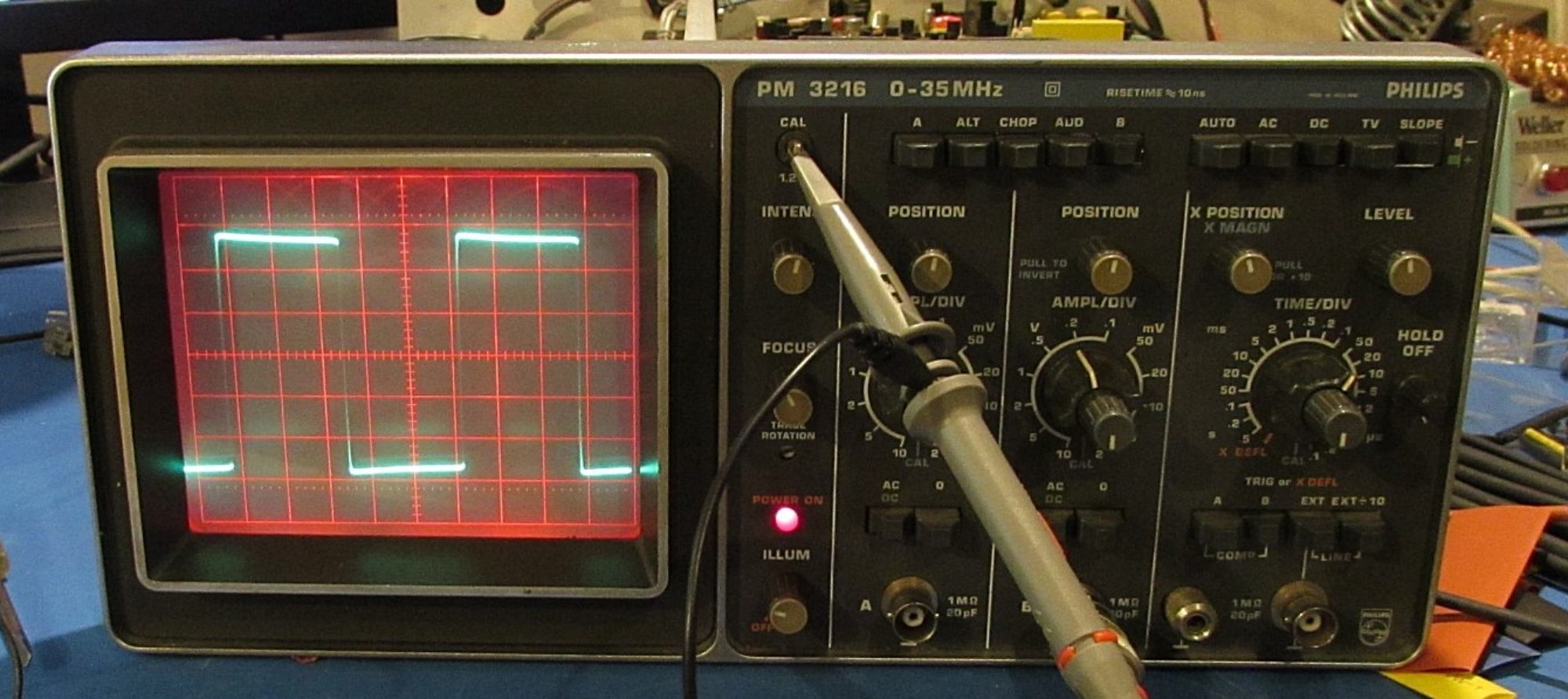A few months ago we purchased a new electric car. It’s a Volkswagen eGolf, and it’s amazing. Here are the specs:

- 35kWh battery, approx 225km range
- 100kW (134hp) electric motor and 214 ft-lbs of torque
- 15.5kWh / 100km power consumption. That’s at C$0.08085/kWh or $1.32 for 100km; or about 0.9 litre / 100km with local gas prices
- It looks normal – the stealth electric car, people don’t even realize VW make one
However, it also meant that I had to do something about charging it at home. Locally there are quite a few public chargers and they’re easy to find with PlugShare, but ideally it would be better to charge at home. I could use the supplied 120V / 10A charger, but that would mean a full charge from empty would take a day and a half, and that probably wouldn’t be the most convenient (although my friend Burt does do that with his Leaf).
I should clarify things a bit here, it’s not really a charger, the charger itself is built into the car, an EVSE (electric vehicle supply equipment) just tells the car how much electricity it can pull, and has a couple of safety checks to cut power unless it’s plugged in, this means than an EVSE isn’t really that complicated.
My garage is already wired for 240V and has a nice 30A / 240V outlet (NEMA 14-30R aka a dryer outlet for those that care about part numbers) for a welder so the only real task was to source a 24A (80% continuous load on a circuit) level 2 EVSE. Oddly it’s an unusual value, 16A and 32A (for 20 & 40A circuits) are common, but the in between wasn’t quite so easy. There are a few commercial ones out there, but they’re really quite a lot more money than the 16A ones, and what the heck, building one is more fun.
- it would work now @ 24A, and could work at higher (or lower) current in the future
- could make it a plug in version (and hardwired later), this would also allow me to ‘take it on the road’
- had a smart WiFi interface
- building things is fun

Another departure about doing this project is that I filmed the whole thing, and placed it on youtube. This was a new endeavour for me, and took a lot of fiddling, camera work, microphones, and video editing that I hadn’t touched before. I think it turned out OK, and I’m eagerly awaiting what people have to say.
The EVSE works well, and the only real issues with the assembly are that the instructions are not super obvious, and that there are two wires that they join in a silly silly way (using a 2 pin header), so you don’t have to solder it. I just soldered it.

